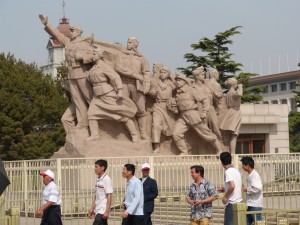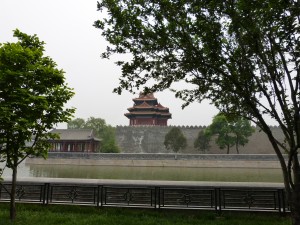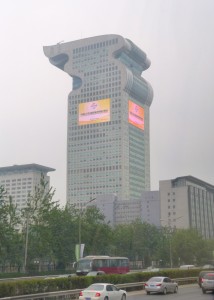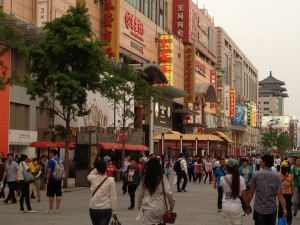May 20, 2013. Shanghai, China — Beijing is truly monumental, in just about every sense of the word.
Statues, of course, but also huge plazas, buildings and complexes that are, in their own way, monuments to philosophers, poets, emperors, more recent leaders, and of course, the worker. Then there are the modern monuments that go by other names – skyscrapers, freeways, Olympic stadiums, and shopping malls — that exalt the majesty of their developers, owners, and architects; of the leadership of modern China; and perhaps most important, of the emerging role, influence and power of the Chinese middle class.
We spent three very busy days touring the best known of these “monuments” – Tiananmen Square, where in 1989 student dissidents faced down tanks while the world watched on TV; the Forbidden City, a complex of structures the size of a small, if largely empty city where two dynasties of emperors and their families and cohorts lived in splendid isolation; the Temple of Heaven, an even larger complex that dwarfs the Forbidden City; and of course, a segment of the Great Wall, in a mountainous region an hour or so drive outside Beijing.
The other monuments are best viewed from the freeways, monumental in-and-of themselves — new buildings and skyscrapers that make the new Beijing look like the city of the future. The architecture is as far out as anything I have seen. I’m not just talking about a skyscraper here and there, I’m talking about an entire skyline.
Many of these buildings and developments have been erected on the figurative graves of the hutongs — old neighborhoods of narrow streets, alleyways, small lakes and canals, and scrunched together row houses. The powers to be have preserved some of these neighborhoods and turned them into tourist attractions. A little bit hokey, perhaps, but still charming places to explore on foot, bicycle, or in a rented rickshaw (with someone else doing the work).
It was in one of these hutongs that I had one of the best meals of the entire trip. While strolling through a market lined with food stalls, I ate sticky buns filled with chopped greens and garlic, juicy dumplings, and a fresh, warm, moist Chinese pancake that draped my fingers as I tore off pieces to eat on the spot (sorry, no photos; my hands were busy).
This was bracketed by great, impromptu meals of street food the night before and the night after. The night before I started in the Donghuamen Night Market with potstickers and shrimp dumplings, then wandered through a monumentally large promenade watching the emergent Chinese middle class spending money and enjoying their new economic freedom. 
I ended in what I think was the Wangfujing Snack Street (no guide, no signs that I could read, so I’m guessing here) with what looked like a Chinese burrito — sprouts and other veggies wrapped in a Chinese pancake with a slather of chili oil and hoisin sauce (I’m guessing here also).
On our last night in Beijing, we snacked our way through the snack street again with a couple of friends and added lobster dumplings, plus a few other hand held delights, and an ice cold beer from a stand on a side street that I could probably never find again.
It was a truly monumental meal in a city that knows how to do street food as well as it does its monuments.
